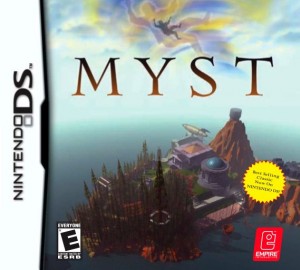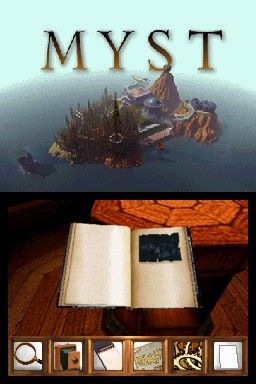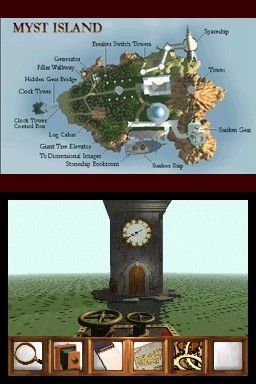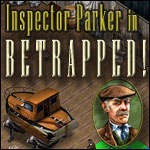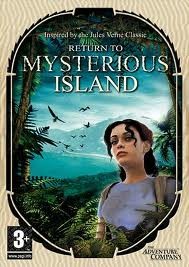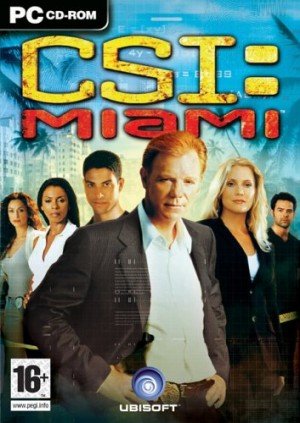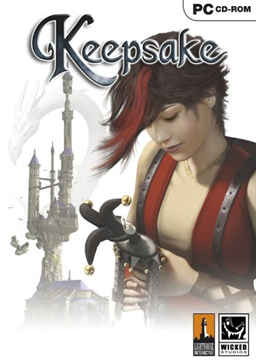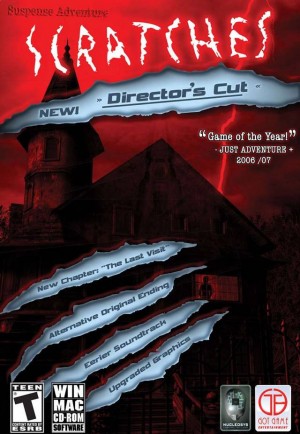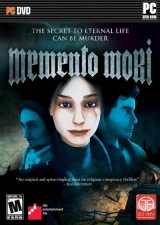Review for Myst DS

An early warning now: if you’re a Myst fan thinking of buying the Nintendo DS port of the game and you still have a copy on disc, run back to your PC with open arms instead of jeopardizing your memories of what a great game Myst really is. If, instead, you’re someone simply looking for more adventure game titles on the DS and considering checking out Myst, read on, although by no one’s standards does this conversion do the game any justice.
I should make it clear up front that I’m a diehard Myst fan. I’ve played the whole series and loved them all (well, apart from Uru) and made it through most of the games without too much help. I’ve always admired the series for its depth of background storytelling, logical if at times difficult puzzles, and generally well-oiled mechanisms. However, this is the first time I’ve played the game on a different platform, and let’s just say it does not impress me on the DS. The game is riddled with bugs and glitches that didn’t exist in the original PC version, which tend to dampen what otherwise could have been an enjoyable port, although the limitations of the handheld itself work against the better qualities of the game to begin with. With a little luck and a lot of patience, you might just get a taste of the Myst experience as it should be, but never much more than that.
For those who have somehow managed never to play Myst in the 15-plus years since its debut, the premise is that you find a mysterious book which describes a strange island, and when you reach the end you touch one of the pages only to find yourself on that very same island. With no idea how to get back, your only option is to explore and unlock its secrets. As you walk around you will find new locations to investigate, like the library in which the story begins to unfold. By reading the various books, you’ll discover that there are several other ‘linking books’ on the island. These books can transport you to four different worlds created by a man named Atrus. Unfortunately, one of his two sons has been destroying these worlds and as a result, Atrus has trapped them both in separate books in the library. In these books you’ll hear each of the brothers’ pleas for freedom. Your job is to search the other worlds for clues and loose pages (returning them to the brothers’ books will reveal more of the story) in order to deduce which one is guilty. Along the way, you're confronted with a series of puzzles you will have to complete in order to link back to Myst Island.
Along with the four primary worlds, you will visit a bonus “Age” that becomes accessible after you finish the main game. All worlds were once inhabited by the two brothers, Sirrus and Achenar, and you will explore their various dwellings. Channelwood is a treetop village, the Selenitic Age a small island, the Mechanical Age a rotating fortress, and the Stoneship Age allows you to explore a small rocky atoll on which a ship has crashed. After you have completed these worlds and seen the game to its conclusion, you will be able to travel to Rime (there isn’t an option), which is a short level and feels a little tacked on. It’s not exactly “new”, either, as it was first introduced in realMyst, and it only serves to add a small amount to the story of Myst. Whilst it’s nice for longtime fans to be able to play a new Age, I would have preferred the original ending and the ability to explore Myst Island after the game is finished, although perhaps I’d have thought more highly of it without all the technical issues that plagued the experience.
To move around these worlds, you use the stylus and touch screen, as there are no buttons that have any effect in this DS port. This is a fine idea, easily reproducing the slideshow-style point-and-click mechanics of its predecessor, but like every other tool at your disposal, it’s poorly implemented. Navigating is done simply by tapping the area in front of you. In some places you are able to turn left and right but in others you will only be able to turn around and go back the way you came. This might seem limited but it ends up being a good thing, as moving around can be cumbersome and sometimes tapping too fast means you’ll end up in the opposite direction of where you wanted to go.
The other use of the stylus is to operate the buttons and switches in puzzles, which would be fine if the game’s hotspots weren’t so minute. This is largely connected to the visual display, which is already small considering the size of the DS screen, but then further reduced by a tool bar which covers a quarter of that screen. This is bad enough in a game which should pride itself on its immersive vistas, but some of the buttons are so small that it takes a horrible amount of time and dexterity to complete puzzles that should take minutes rather than hours. There’s an option to magnify most scenes, but this serves only to generate a pixelated, unrecognisable mess on the top screen.
The only time the magnifying glass is of any real use is when reading the pages and books you find. Even that is time consuming, as the books are presented with the system held horizontally and you have to continually move the magnifying glass across the screen to read a whole page. Given that the DS is noticeably book-shaped, and that games such as Hotel Dusk have taken advantage of this, why not make it so that a page fills each screen vertically, allowing you read it like a normal book? It really doesn’t take a Myst fanatic to figure that out.
Along with the magnifying glass, you will find a notepad and camera, and one requirement of Myst is definitely taking notes. There is no way around this in order to solve the puzzles. Unfortunately, the notepad requires you to input notes on a typewriter-like keypad, with just five lines to jot down any clues. These will take you ages to fill using the miniature keys, and the notes don’t even last between worlds. To avoid this inconvenience, a pen and paper is still your best option, but given that this is a portable console, that’s hardly a helpful alternative. A function where you could make handwritten notes using the stylus would have been much better, which other games have also done. There’s also the option to take a photograph which you can store. This is a nice idea, but it isn’t much use given the poor resolution of the image, and you can only ever keep one, as the photo is replaced when you take a new one.
You can save the game in one of three slots, and anyone playing should be sure to use them all; save too often in the same slot and when you encounter one of the many bugs in the game, you may have to start over. For instance, when you link to Channelwood, the game may spawn you in the wrong place, which makes it impossible to progress. Providing that you save the game before you link (which I didn’t my first time around), you can keep trying it until it works, but such an error is still inexcusable. In some places you’ll solve a puzzle and the game will crash, as the console will freeze and you’ll have to turn the system off. I didn’t know it was even possible to crash a DS, but Myst is proof that it is.
All the puzzles from the original Myst are included, which range from easy to extremely difficult, though the challenge of a lot of puzzles are doubled by the troublesome interface. On an average-sized computer screen, these puzzles can be frustrating at times but never hard to operate; on the miniature screen of the DS, it takes a great deal time to set the puzzles even when you know the right answer. The tower rotation puzzles, the sound puzzles, and the mechanical puzzles are all here, but it doesn’t seem like any effort has been made to adapt them for the DS. Several puzzles also require close listening, which is an unpleasant experience when all the voices, beeps, boops and ambient music sound like they’re coming from a poorly tuned radio.
Given all the technical problems that can unfairly impede your progress and ruin hours of work, don’t be too stubborn about not looking at a walkthrough. I completed the original game twice a long time ago, and never needed a walkthrough. This time around, I’d often find myself looking at one just to confirm what I already knew or to save myself from redoing something which was an utter pain to do in the first place. The only thing that kept me going was the promise of Rime, which I’d never yet played and now wish I hadn’t, as it probably features the worst example of stylus control possible. After much persistence and searching for help, I managed to complete it, but this “bonus” certainly wasn’t worth the effort.
As a longtime fan of the Myst series, I so badly wanted to like this game, and there are moments where you catch a tiny glimpse of what it could have been: immersive, enjoyable, and even fun. More often than not, though, it ends up being the most painful, soul-destroying, stressful, rather-stick-a-rusty-nail-in-my-eye excuse for an adventure game I have ever played. It saddens me to say this, since with a little common sense and better coding this could have been a great conversion, but as it stands this game is a complete waste of money. Knowing Myst well, with a walkthrough at hand and patience I’ve rarely needed to summon before, I completed this game in 16-20 hours, bearing in mind that I had to start the game over at one point. All this adds up to a game that should never have made it on to the shelves in its current form. There are so many unforgivable problems with this game that each should take a star off the score, but as it is I grudgingly leave it one star simply because it has Myst on the box and offers the occasional reminder of what made the original game so great, even if it only ever passes fleetingly on screen.


